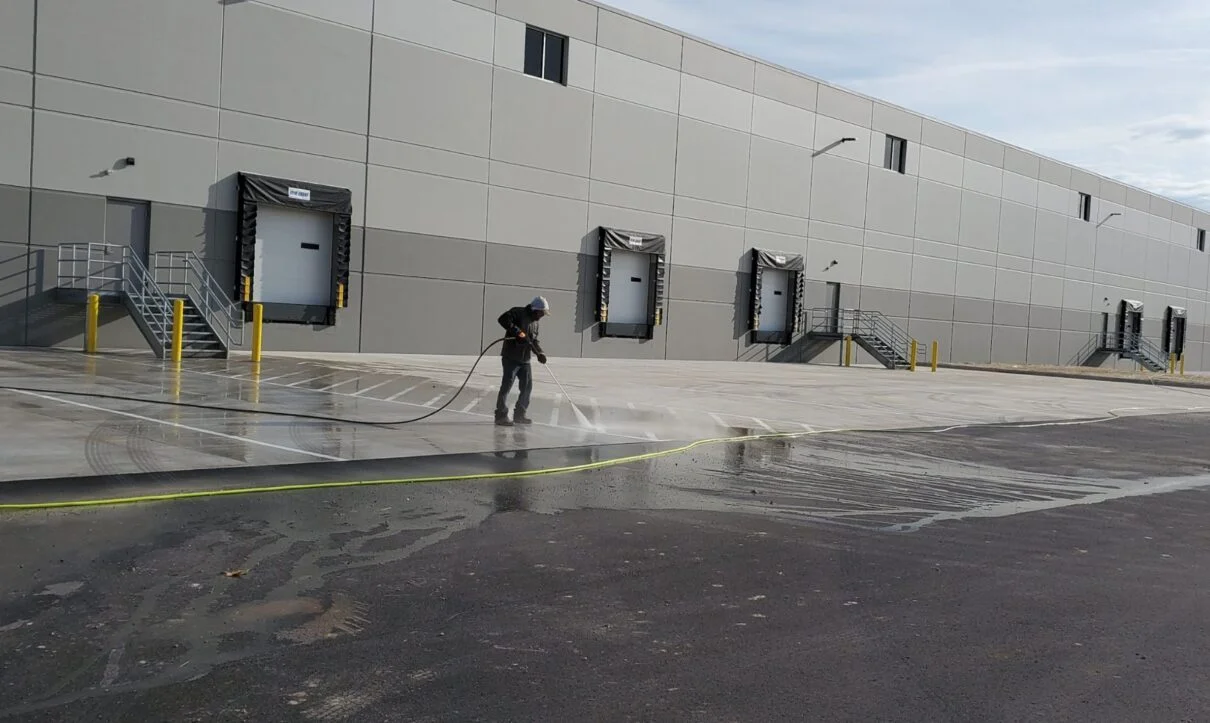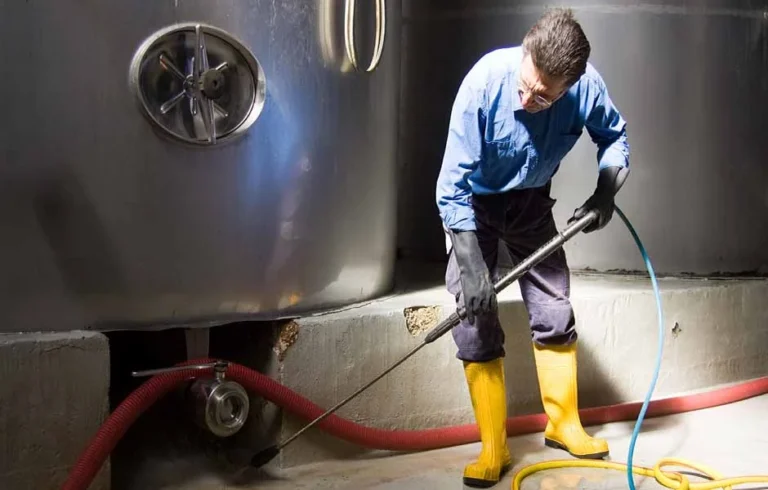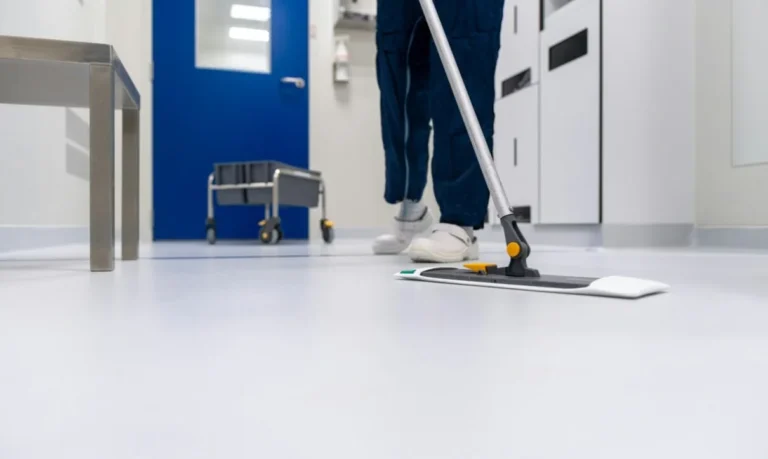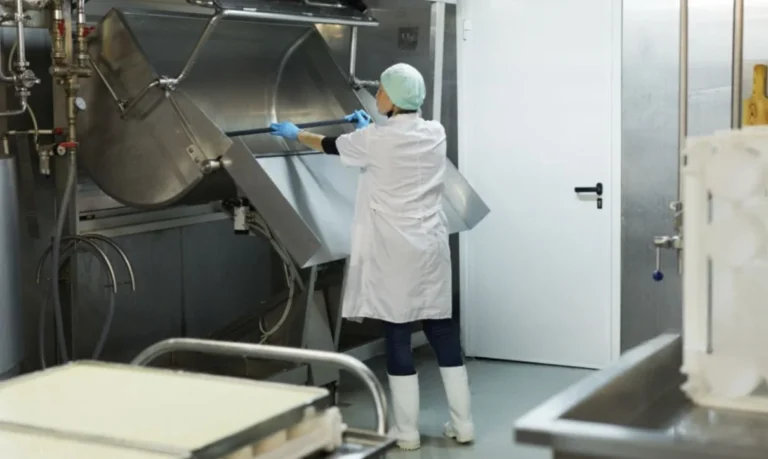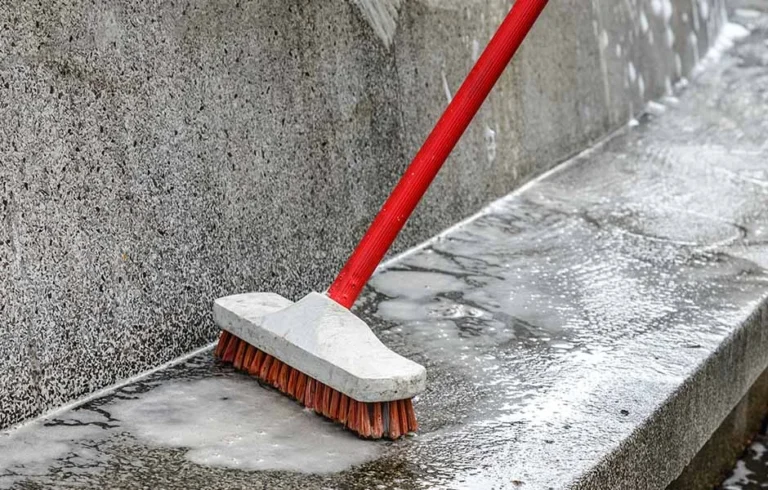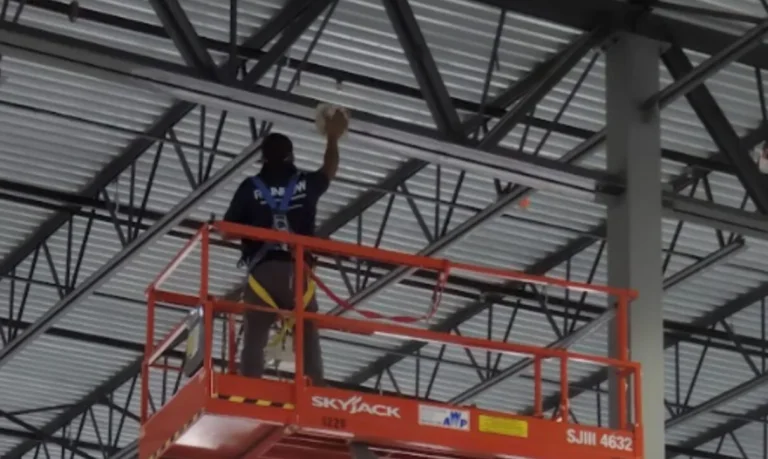The Role of Technology in Industrial and Commercial Cleaning: Comparing Methods and Tools
The Role of Technology in Industrial and Commercial Cleaning: Comparing Methods and Tools
In today’s fast-paced world, the efficiency and effectiveness of industrial and commercial cleaning are bolstered by advancements in technology.
Exploring the integration of cutting-edge tech into cleaning processes can reveal how businesses can achieve a new level of cleanliness and efficiency.
Key Takeaways:
- Innovative solutions: Technological advancements are revolutionizing cleaning methods and protocols in commercial spaces.
- Customized efficiency: The right technology can significantly streamline cleaning efforts, tailored to specific industry needs.
- Sustainability focus: Many modern cleaning technologies emphasize eco-friendliness, reducing environmental impact.
- Advanced hygiene standards: The use of tech in cleaning helps businesses meet and exceed health and safety regulations.
- Cost Benefits: Analyzing the ROI of tech-driven cleaning tools over traditional methods.
Historical Evolution of Cleaning Technologies
From scrub brushes to smart robots, the development of cleaning technology paints a vivid picture of human progress. Reflect back to when manual scrubbing was the day’s order; it was more than toil—it was how business was done. Fast forward, and the scene today is starkly different: robots glide across floors, and computerized systems control cleaning schedules.
Driven by the desire for efficiency, the industry has embraced automation, enabling faster and more dependable cleaning routines. Such advancements have proved invaluable, particularly in sectors relentless for time, like healthcare, where clean environments are not a luxury but a necessity. Imagine, once time-intensive tasks now summoned at the click of a button. It’s an era where technology’s role is paramount, ensuring facilities remain pristine while the clock barely notices.
Wondering how these shifts have turned out in the real world? Several case studies showcase the triumphant integration of technology into daily cleaning rituals, with businesses noting accelerated operations and reduced downtime. An airport, for example, deployed autonomous floor scrubbers, witnessing not just savings in labor hours but also a new standard of cleanliness, much to the delight of travelers. In a manufacturing plant, regular maintenance tasks have been transformed by predictive analytics, pre-empting issues before they arise, and keeping machinery running without unscheduled breaks.
Thanks to these stories of success, more industries are tuning in to the benefits of tech-driven approaches, seeking better outcomes for their cleaning needs. So if you’re struggling to keep pace with the demands of a clean establishment, maybe it’s time to see what technology has on offer. Roll up your sleeves, for the future of cleaning beckons, equipped with solutions that promise not just a quick fix but sustained harmony between cleanliness and productivity.
Analyzing the Latest Cleaning Tech Innovations
In the bustling sphere of industrial and commercial cleaning, the latest tools and equipment are setting a brisk pace for innovation. As we investigate advances in this sector, we discover high-performance gadgets transforming mere scrubbing into a symphony of precise, hygienic choreography. The machines of today—programmable, adaptable, and often autonomous—usher in a new age of cleanliness with their superior capabilities.
These tech innovations are not just novelties; they bolster the daily routines of facilities management with tangible benefits—a case in point being their ability to tackle tasks with accuracy unseen in traditional methods. By conducting a comparative analysis, we find that these cutting-edge devices don’t just toil alongside humans; they often outperform their flesh-and-blood counterparts, proving indispensable in the quest for impeccable spaces.
Consider, for a moment, the efficiency that robotic cleaners bring to expansive commercial areas. With their relentless energy, these machines cover vast square footage without fatigue or the need for breaks, thus extending the span of clean spaces while reducing operational hours. Automated window cleaning systems that cling to high-rise buildings, for example, have shifted the narrative from risky human endeavors to standardized precision.
Yet, it’s not solely about replacing traditional devices with fancy contraptions; it’s about striking a harmony where both old and new collaborate to elevate cleanliness standards. High-tech innovations often operate with optimal resourcefulness, cutting down on waste and ushering in an era of environmental consciousness within the cleaning industry.
Real-world applications of these inventions have proved that the promise of innovation is not an empty one. Such technology delivers unparalleled standards of cleanliness and hygiene, a truth that more and more businesses are awakening to. Cleaning, once considered a mundane task, now gleams with the promise of technological advancement.
If you’re intrigued by the prospect of integrating these sophisticated tools into your cleaning regimen, it’s well worth exploring the efficiency and sustainability of our Commercial Floor Cleaning Services, a step towards embracing innovation that could redefine the standards of your business’s cleanliness.
Implementing Smart Cleaning Solutions
The dawn of the IoT and AI has broadened the horizons in industrial and commercial cleaning. Today, we stand at the vanguard of a revolution, as smart technology infuses cleaning with unmatched efficiency and intelligence. In this arena, the Internet of Things (IoT) and Artificial Intelligence (AI) are not mere buzzwords—they are the powerhouses driving innovation.
Smart devices now have the ability to communicate and operate autonomously. They can schedule cleaning tasks based on usage patterns, monitor their own performance, and manage resources with a finesse that was unthinkable a decade ago. These machines are not just about brute cleaning power; they are about strategic, informed action.
Take, for instance, sensor-equipped trash bins that signal when they’re full, ensuring timely disposal and optimizing janitorial routes. Or consider robotic floor scrubbers that navigate complex environments, adjusting their path in real-time to avoid obstacles and ensure comprehensive coverage. These are not isolated examples but illustrations of a broader trend where smart gadgets are reshaping the cleaning industry.
As we deploy these intelligent systems, we’re witnessing a synchronicity between human oversight and machine precision. This synergy optimizes operations, streamlines efforts, and paves the way for a future where clean spaces are a given, not a goal. It’s a future where hygiene meets harmony, optimizing schedules and energy with an ease that transforms maintenance from routine to refined.
With the rise of AI, predictive maintenance has become a potent tool. Intelligent algorithms can anticipate equipment malfunctions, allowing for proactive servicing that minimizes downtime. These systems learn from every task, getting smarter with each sweep, wipe, or polish—representing a quantum leap from traditional, reactive maintenance protocols.
We’re at the threshold of an era where every device, from the humble vacuum to the mightiest industrial cleaner, is part of a seamless, integrated network. So if your business is ready to step into this streamlined landscape of cleaning, consider allowing us to lead you there. For a glimpse into how our services employ such technology, explore our Industrial Cleaning Services in Chicago, which embody the pinnacle of smart cleaning innovation.
Enhancing Eco-Friendly and Sustainable Practices
The interplay between technology and sustainability is reshaping the cleaning industry. Innovations are not only elevating standards of cleanliness but also ensuring operations tread lightly on the environment. The infusion of tech into green cleaning initiatives marks a progressive step forward, minimizing chemical usage and waste while delivering exceptional results.
As we delve into how technology advances eco-friendly practices, it’s clear that the future of cleaning lies in sustainable solutions. Machines that precisely dispense cleaning agents reduce the amount of chemicals spilling into ecosystems. Additionally, data-driven systems pinpoint areas needing attention, preventing unnecessary water waste while conserving energy.
Industry benchmarks are now set by equipment that harmonizes strength with stewardship. For instance, floor scrubbers equipped with water recycling capabilities extend the life of cleaning fluids without compromising on hygiene. It’s a testament to how far the integration of eco-conscious tools can meet the twin objectives of effectiveness and sustainability.
This deliberate approach extends beyond the machinery to encompass the very substances that facilitate cleaning. Eco-friendly products that leverage biodegradable and plant-based ingredients are becoming a fixture within eco-conscious businesses. These alternatives to harsh chemicals symbolize a commitment not only to cleanliness but also to the health of both people and planet.
Our technological era empowers us to make smarter choices. We have the opportunity to choose gadgets and gear that safeguard our environment while setting exemplary standards of cleanliness. It’s this fusion of technology with a green philosophy that defines a new direction for the industry.
For organizations keen on adopting such forward-thinking practices, the chance to revolutionize their cleaning strategy awaits. By exploring our Commercial Floor Cleaning Services, businesses can see firsthand how technology pairs with the principles of sustainability to craft a cleaning solution that’s respectful of our environment while exceeding performance expectations.
Evaluating Tech for Improved Health and Hygiene
In an age where health codes and cleanliness are paramount, technological innovations in the cleaning industry have proven to be decisive. Advanced disinfection technologies are at the forefront, providing healthcare and food-related industries with reliable solutions to uphold stringent hygiene standards.
Central to this revolution are devices designed to combat pathogens and ensure public safety. Electrostatic sprayers, for example, cover surfaces more thoroughly than traditional methods, offering a level of sanitation that meets the pressing demands of health codes. Likewise, UV-C light sanitizers provide a chemical-free way to eliminate bacteria and viruses on high-touch surfaces in mere seconds.
The importance of these technologies has never been clearer, particularly when considering the delicate environments of hospitals and food preparation areas. Disinfection technologies not only preserve hygiene but also foster trust and assurance among staff and clientele. The adoption of these tools is crucial for industry sectors where cleanliness directly influences health outcomes.
The efficiency of these intelligent systems is matched by their precision. Automated sensors can detect contamination levels, deploying cleaning protocols only where necessary, thus enabling a more focused approach and reducing unnecessary labor and waste. It’s a proactive stance, leveraging the latest tech to maintain environments that don’t just look clean but are cleaner on a microbial level.
On reviewing the array of technologies existing today, one finds an array of innovative tools that provide enhanced oversight of sanitation processes. No longer is it sufficient to clean for appearance alone; the health implications dictate a necessity for thorough and verifiable cleanliness. In this respect, we see a merger of capability with responsibility—tech that not only cleans but also protects.
For businesses aspiring to embody the highest standards of health and hygiene, it’s evident that embracing these technological advancements is not just an option, but an imperative. To see what cleaning tech can do for your operations and how it aligns with health regulations, explore our Industrial Cleaning Services in Chicago. Here, innovation and hygiene coalesce, offering peace of mind with every surface touched and every corner cleared.
Cost vs. Value: The Financial Implications of Cleaning Tech
In the business sphere, financial investments are scrutinized for their return potential. High-tech cleaning tools are no exception, and a meticulous cost analysis is imperative. While the initial outlay for advanced cleaning equipment may exceed that of conventional methods, the long-term value derived from such investment can be substantial.
One must consider the lifespan and maintenance requirements of this equipment. High-tech machines are often built to last longer and require less frequent repairs than traditional counterparts, a testament to their construction and the sophistication of their design. This durability translates to lower replacement costs and reduced downtime, both of which have a direct impact on the bottom line.
The influence of these technologies on labor costs is also significant. Automation and smart devices can perform tasks that would typically require manual labor, allowing staff to focus on more complex responsibilities that can’t be automated. Furthermore, training requirements are streamlined with intuitive interfaces and smart systems, curtailing the time and money spent on extensive training programs.
As business leaders evaluate the pros and cons of tech adoption, weighing these financial aspects is crucial. The cost savings from labor and maintenance, combined with heightened efficiency, must be balanced against the upfront investment. It is this balance that compels firms to make informed decisions about when and how to integrate these pioneering tools into their operations.
The economic implications expand beyond simple cost savings, with technology acting as a catalyst for growth and innovation. In a market where cleanliness is intertwined with customer perception and satisfaction, embracing cutting-edge cleaning technology is not just about maintaining a facility—it’s an investment in a brand’s image and future success.
For businesses ready to leap into the future of cleaning, it is recommended to explore the efficiency and sustainability of our Commercial Floor Cleaning Services. The integration of advanced tech reflects a strategic fusion of cost-effectiveness and superior service delivery, primed to bolster the competitive edge of savvy enterprises.
Case Studies: Success Stories in Technology-Driven Cleaning
As we navigate the tides of innovation, numerous businesses have already charted their course, integrating high-tech cleaning solutions with resounding success. These enterprises serve as beacons, highlighting the measurable outcomes and improved metrics achieved through technological implementations in their cleaning regimes.
From healthcare facilities to corporate offices, the narratives draw a picture of significant enhancements in efficiency and cleanliness. For instance, a nationwide retail chain adopted autonomous floor scrubbers across their locations, resulting in a 25% reduction in cleaning-related expenses while boosting the consistency of cleanliness. The robots, entrusted with mundane tasks, free up labor to focus on customer service touchpoints, a strategic reallocation of human capital.
Similarly, a prominent hotel group implemented UV disinfection robots in their sanitation process, dramatically decreasing the presence of pathogens. This adoption not only aligned with health recommendations but also instilled a heightened sense of trust among guests, pivotal in the hospitality industry’s recovery phase during the pandemic.
In the food service sector, the introduction of AI-driven equipment for cleaning cooking stations led to a marked improvement in hygiene standards, surpassing the stringent health codes. Additionally, the smart technology provided data analytics on usage patterns, empowering the management to make data-driven decisions regarding maintenance schedules and inventory management.
These success stories are more than isolated phenomena; they provide insight into the tangible advantages of adopting cleaning technology. They lay the foundation for a strategy centered on long-term value over mere cost-cutting—a testament to the potential of tech to augment the quality of cleaning services.
Featuring noteworthy advancements and their positive ripple effects, these case studies encourage businesses on the fence to consider a leap into technology-driven cleaning. For those seeking to explore how such transformations can materialize within their operations, our Industrial Cleaning Services in Chicago stand ready to demonstrate how tech can elevate both hygiene and fiscal prudence.
Conclusions
As we’ve journeyed through the current technological landscape in industrial and commercial cleaning, it’s evident that the sector is experiencing a seismic shift. The integration of advanced technologies has proven to not just enhance the quality and efficiency of cleaning services but to also promote practices that are conscious of our planet’s wellbeing. These innovations are carving pathways to significant long-term cost savings, affirming that the initial investment in tech yields substantial returns, both economically and environmentally.Through the automation of tasks, we have uncovered that productivity rises while labor costs plummet. Smart devices and IoT systems optimize resources and streamline scheduling and monitoring, leading to an unprecedented level of operational efficiency. In tandem, eco-friendly machines and products advance sustainability goals, reducing chemical usage and waste, setting industry benchmarks that align with today’s green initiatives.In the realm of healthcare and food services, technology’s role in meeting and surpassing health codes is inexorable. Disinfection technologies increase hygiene standards, ensuring a safe and trusted environment for customers and staff alike. These implementations are more than just operational changes; they represent a commitment to the health and safety of the broader community.As substantiated by numerous case studies, businesses embracing these technological solutions are reaping measurable outcomes. From reduced expenses to improved metrics in cleanliness and efficiency, there’s a wealth of learning from these pilot programs and success stories that can guide others on the same path to innovation.Our collective expedition has reached a critical juncture where the benefits of technology in cleaning are undeniable. As we stand ready to embark on the future of cleaning, we extend an open invitation to you to discover the potential benefits that these technologies can offer your business or facility.For a deeper understanding of how our services leverage the power of technology, we encourage you to explore our Commercial Floor Cleaning Services. Furthermore, witness firsthand the unparalleled cleanliness delivered by our Industrial Cleaning Services in Chicago. Together, let’s forge a future that is spotless, sustainable, and smart.
Frequently Asked Questions (FAQ):
How does technology impact the speed of cleaning services?
Technology significantly increases the speed of cleaning operations through automation, efficient machinery, and smart scheduling.
Can technology in cleaning be cost-effective?
Despite the initial investment, technology can offer long-term cost savings through efficient use of resources, reduced labor costs, and prolonged asset lifespan.
How does technological innovation contribute to eco-friendliness in cleaning?
Innovative technologies often utilize less water, fewer chemicals, and more sustainable materials, reducing the environmental impact of cleaning processes.
Do high-tech cleaning solutions meet higher hygiene standards?
Yes, advanced cleaning technologies are designed to meet stringent health and hygiene standards, ensuring a safer environment for employees and customers.
Is staff training required for the transition to high-tech cleaning?
While training is necessary, many tech solutions are designed for ease of use, and ongoing support is typically available from the technology providers.
What sectors benefit most from cleaning technology?
While all sectors can see improvements, healthcare, hospitality, and food service industries particularly benefit from the precise and rigorous cleaning standards that technology can provide.

